
First observations:
![]() The fur is dirty, sticky, missing or torn in places.
The fur is dirty, sticky, missing or torn in places.
![]() The bear has lost volume all over the body and head.
The bear has lost volume all over the body and head.
![]() The tears reveal the synthetic fiber padding.
The tears reveal the synthetic fiber padding.
![]() The eyes and nose are missing, the mouth is grossly repaired.
The eyes and nose are missing, the mouth is grossly repaired.
![]() The right ear and the fur around it took on a brown color and a cardboard effect. The front of the ear is burnished, cardboard, stiff.
The right ear and the fur around it took on a brown color and a cardboard effect. The front of the ear is burnished, cardboard, stiff.
![]() The left ear is disjointed, the fur is torn or missing. The ear is connected to the head by large loose stiching marks. You can see the lack of hairs. The rear is badly damaged, torn, disjointed and peeled. You can see the tears at the back of the ear.
The left ear is disjointed, the fur is torn or missing. The ear is connected to the head by large loose stiching marks. You can see the lack of hairs. The rear is badly damaged, torn, disjointed and peeled. You can see the tears at the back of the ear.
![]() The muzzle has lost its shape.
The muzzle has lost its shape.
The structure and joints are however in good condition.
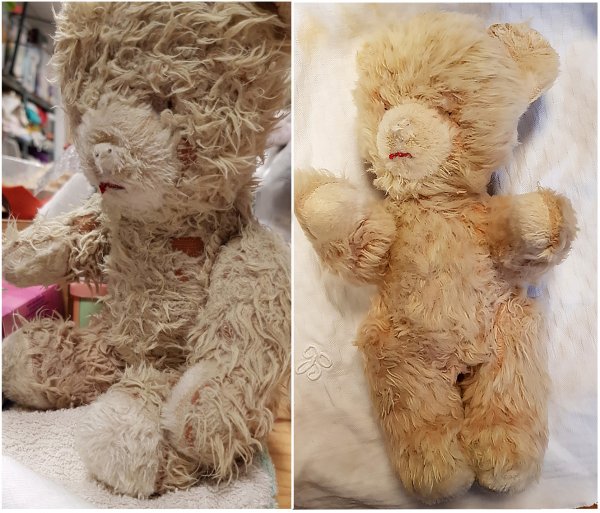
Since the bear’s interior is made of synthetic fiber, water and shampoo can be used on the surface to clean the fur.
The bear regains its color. It remains to restore the texture.
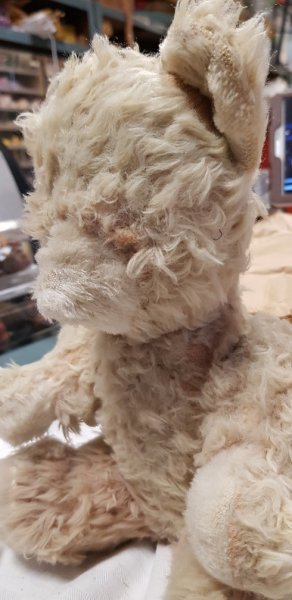
The head is unstitched to introduce carded wool and restore volume. The seams are closed at the ladder stitch.

The cleaned, brushed ears are sewn back to the point of ladder. The snags are repaired.
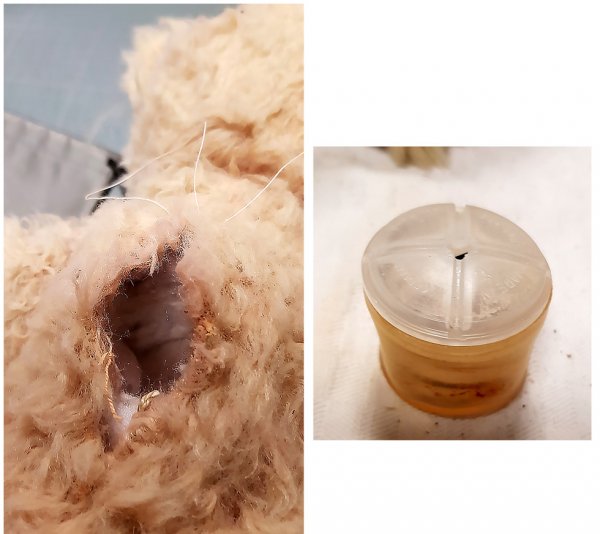
Each limb is partially unstitched to introduce carded wool and restore volume.
The seams are closed at the ladder stitch.
The opening of the back reveals a space with a noisemaker that works out of the bear.
After introduction of carded wool to complete the padding, the noisemaker is placed back in its space. The opening is closed at the ladder point.
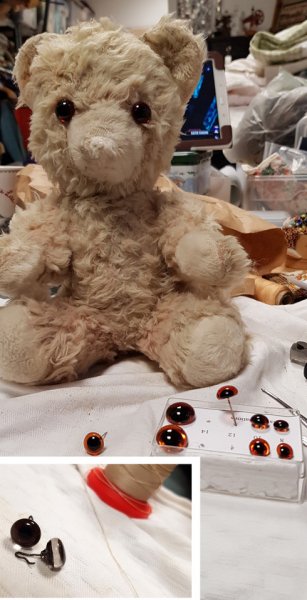
After cleaning and padding, the head is ready to receive eyes and nose.
It took a few trials to choose the right eyes for the bear.
The choice is made on old painted glass eyes, 12 mm

The nose and mouth can be embroidered as they were on most bears from the sixties on the remains of the original nose and mouth.
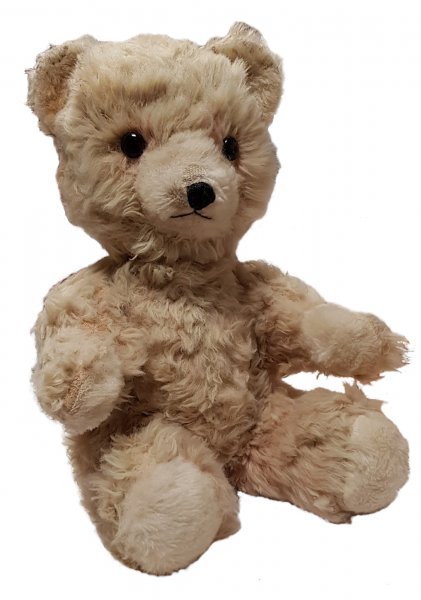
Your bear must be restored ?